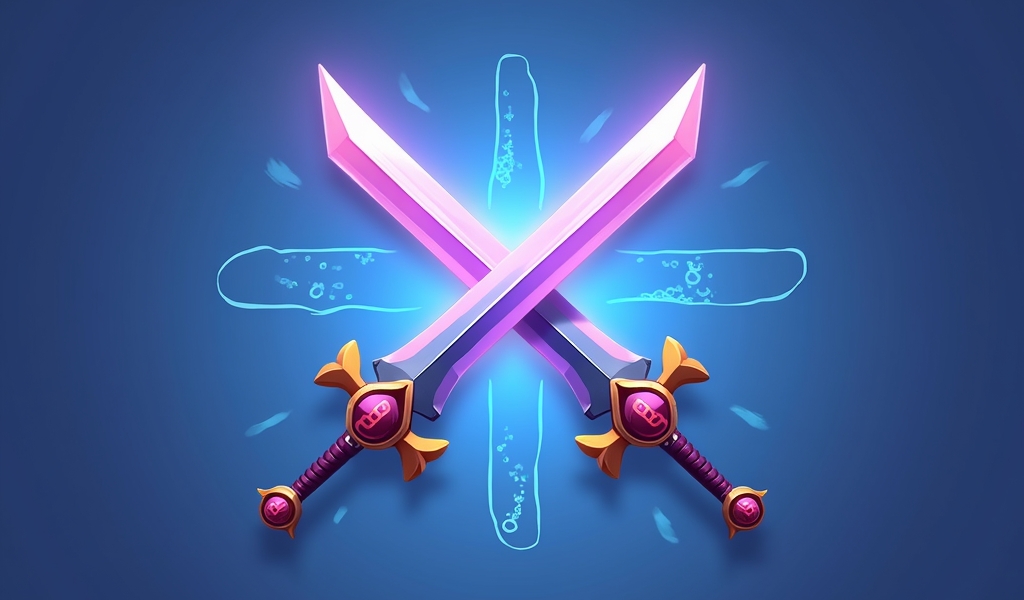Overview
To improve trading in lane effectively, players must master key techniques including understanding trading fundamentals, leveraging minion advantage, tracking cooldowns, positioning strategically, developing matchup awareness, recognizing item power spikes, and controlling vision. These professional-level tactics create opportunities to deal more damage than you take during exchanges, ultimately building game-winning advantages that can elevate your gameplay from Silver to Gold and beyond.
Table of Contents
Looking to improve trading in lane and dominate your opponents in League of Legends? You’re not alone. Trading—those brief exchanges of damage with your lane opponent—can make or break your early game advantage. Whether you’re in the top lane fighting solo or in bot lane coordinating with a support, mastering the art of trading will elevate your gameplay significantly.
For many players, trading effectively remains one of the most challenging aspects of laning. However, with the right techniques, you can consistently win trades and build leads that transition into game-winning advantages. This guide breaks down seven professional-level tactics that will help you improve trading in lane against any opponent.
Understanding Trading Fundamentals
Before diving into advanced tactics, let’s establish what makes a good trade in League of Legends. Trading in lane refers to exchanging damage with your opponent while trying to come out ahead. The goal is simple: deal more damage than you take.
Successful trading is about timing, awareness, and execution. You want to strike when your opponent is vulnerable and retreat before they can retaliate effectively. Improving your laning phase starts with understanding these fundamentals.
There are three primary types of trades you’ll encounter:
- Poke trades: Using long-range abilities or auto-attacks to chip away at your opponent
- Short trades: Quick exchanges using 1-2 abilities before disengaging
- Extended trades: Longer exchanges involving multiple abilities and auto-attacks
Knowing which type of trade favors your champion is crucial. For example, Zed excels at short trades with his shadow combo, while Darius prefers extended trades to stack his passive. Understanding your champion’s trading pattern is the foundation upon which all other trading skills are built, according to League of Legends champion guides.
Mastering Minion Advantage
One of the most overlooked aspects of trading is minion advantage. Minions deal significant damage in the early game, especially when grouped. Trading while your opponent has more minions than you is a recipe for disaster.
To improve trading in lane, always count the minions before engaging. As a general rule, a wave advantage of 4+ minions makes trading unfavorable. This is especially true in the early levels when minion damage outweighs champion damage.

Cooldown Tracking Techniques
Elite players consistently improve trading in lane by mastering cooldown tracking. When your opponent uses a key ability—particularly their escape or crowd control—a window of opportunity opens.
For example, when Ahri misses her charm, she becomes vulnerable for approximately 12 seconds at rank 1. Similarly, when Ezreal uses his Arcane Shift, he has no escape for 28-16 seconds depending on rank and cooldown reduction.
Tracking cooldowns doesn’t require superhuman memory. Start by focusing on 2-3 critical abilities per opponent. Improving your map awareness will also help you track enemy cooldowns across the map.
Try these practical techniques to master cooldown tracking:
- Mentally note when major abilities are used (especially ultimates)
- Use chat timestamps for important cooldowns (e.g., “flash 1415”)
- Time your aggression around enemy cooldown windows
- Communicate cooldowns to your jungler for gank opportunities
Professional players often use chat timestamps to track summoner spells, as noted by Pro Build Stats. This allows them to coordinate with their team for optimal engage timings.
Positioning for Successful Trades
Your position in lane directly impacts your ability to trade effectively. The ideal trading position varies based on your champion and matchup, but several principles remain constant.
First, consider your threat range—the distance at which you can engage in a favorable trade. Stay just outside your opponent’s threat range while being ready to step in for your own trades. This creates pressure without exposing yourself to unnecessary damage.
For melee champions, positioning near the edge of minion aggro range allows you to step in for trades while minimizing minion damage. For ranged champions, maintaining maximum auto-attack range gives you the ability to poke while staying safe.
To improve trading in lane through positioning:
- Stand to the side of minions rather than behind them to create unpredictable angle attacks
- Position opposite to your escape route (if you plan to retreat toward your tower, approach from the river side)
- Use brushes to drop minion aggro after trading
- Adjust your position based on jungler threat and vision timing
Players seeking to climb from Silver to Gold often make significant improvements just by focusing on their trading position.
Champion Matchup Awareness
Every champion matchup has specific trading patterns and power spikes that you must understand to trade effectively. Developing champion matchup awareness is essential to improve trading in lane consistently.
For top lane champions, knowing whether you have the advantage in short or extended trades can determine your entire laning strategy. Similarly, mid lane matchups often revolve around cooldown management and wave manipulation.
Here’s how to develop strong matchup awareness:
- Study specific matchups through replays and guides
- Track power spikes (levels 2, 3, 6 and first item completions)
- Recognize when to concede lane priority
- Adapt your trading style based on the specific matchup
Remember that matchups change with patches and meta shifts. Staying updated on current win rates and matchup statistics can provide valuable insights for your trading approach.

Item Power Spikes
Item completion creates significant power spikes that dramatically affect trading dynamics. To improve trading in lane, you must recognize both your own power spikes and your opponent’s.
Key item power spikes include:
- Mythic items (Kraken Slayer, Divine Sunderer, Luden’s Echo, etc.)
- Serrated Dirk for AD assassins
- Lost Chapter for mages
- Noonquiver for marksmen
- Component items that provide significant stats (Sheen, BF Sword)
When you complete a power spike item, look to trade aggressively. Conversely, if your opponent returns to lane with a completed item while you’re still building components, play more cautiously until you match their spike.
For ADC players, understanding item timing is particularly crucial, as a BF Sword advantage can completely swing the lane dynamic.
Additionally, consider how certain items change trading patterns. Lifesteal items allow for more sustained trading, while burst items favor short trades. Adapting your trading style to match your item build will maximize your lane dominance.
Vision Control for Trading
Vision control isn’t just for avoiding ganks—it directly impacts your ability to trade effectively. When you have superior vision, you can trade more aggressively knowing the jungler’s position.
To improve trading in lane through vision:
- Use control wards to deny enemy vision in lane brushes
- Place deep wards to track the enemy jungler
- Clear enemy wards before initiating trades
- Coordinate with your jungler using vision advantage
Proper wave management combined with strong vision control creates the ideal environment for favorable trades. When you know you’re safe from ganks, you can position more aggressively and force extended trades.
Professional players often use vision control to enable aggressive trading, knowing they can fully commit without jungler interference. This technique is particularly effective in high-stake tournament games according to professional League statistics.
Conclusion
Mastering the art of trading in lane is a continuous journey that combines multiple skills into one cohesive strategy. By implementing these seven pro tactics—understanding fundamentals, utilizing minion advantage, tracking cooldowns, optimizing positioning, developing matchup awareness, recognizing item power spikes, and controlling vision—you’ll dramatically improve trading in lane and dominate your position.
Remember that trading effectively requires practice and conscious implementation. Focus on one tactic at a time until it becomes second nature before moving to the next. With persistence and application, you’ll see your lane presence grow stronger and your win rate climb.
The best players aren’t just mechanically skilled—they understand the subtle dynamics that create lane advantages. By improving your trading, you’re building the foundation for consistent success in League of Legends.
Frequently Asked Questions
How do I know when to trade in lane?
Trade when your opponent uses a key ability on minions, when you have a minion advantage, or when you’ve just hit a power spike level (2, 3, 6). Also look for opportunities when your opponent steps forward to last hit.
What’s more important: CS or trading damage?
Both are important, but prioritize CS unless a trade would create significant lane pressure or kill potential. Ideally, you want to trade when it doesn’t force you to miss creeps.
How do I improve trading against ranged champions as a melee?
Use brushes to break line of sight, take advantage of your abilities’ gap closers, and trade only when you have defensive skills available. Focus on short, efficient trades rather than extended engagements.
When should I stop trading and focus on all-in kills?
Look for all-in opportunities when you’ve successfully poked your opponent to about 40-50% health, when you hit a major power spike like level 6, or when your opponent makes a significant positioning error.
How do I recover from a bad trade?
After a bad trade, play defensively until your health regenerates, use potions if available, and look for a safe recall timing. Focus on farming safely and wait for jungler assistance before attempting aggressive trades again.




